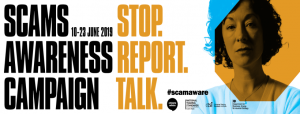
There are things you can do to protect yourself from being scammed online.
Check you’re buying from a real company
It’s important to check you’re buying from a real company. If you’re buying something on a site you haven’t used before, spend a few minutes checking it – start by finding its returns policy. The company’s address should have a street name, not just a post office box.
Check to see what people have said about the company. It’s worth looking for reviews on different websites – don’t rely on reviews the company has put on their own website.
Also, don’t rely on seeing a padlock in the address bar of your browser – this doesn’t guarantee you’re buying from a real company.
Don’t click on or download anything you don’t trust
Don’t click on or download anything you don’t trust – for example, if you get an email from a company with a strange email address. Doing this could infect your computer with a virus.
Make sure your antivirus software is up to date to give you more protection.
Be careful about giving personal information away
Some scammers try to get your personal information – for example, the name of your primary school. They can use this information to hack your accounts. If you come across sites that ask for this type of information without an obvious reason, check they’re legitimate.
Check if your details have been shared online
Sometimes your log-in details can be made publicly available when a website is hacked. This means that someone could use your details in a scam. Check whether your accounts have been put at risk on Have I Been Pwned.
Make your online accounts secure
Make sure you have a strong password for your email accounts that you don’t use anywhere else. If you’re worried about remembering lots of different passwords, you can use a password manager.
Some websites let you add a second step when you log in to your account – this is known as ‘two-factor authentication’. This makes it harder for scammers to access your accounts.
Find out how to set up two-factor authentication across services like Gmail, Facebook, Twitter, LinkedIn, Outlook and iTunes on the website Turnon2fa.
Pay by debit or credit card
Pay by card to get extra protection if things go wrong. Read our advice on getting your money back after you’ve been scammed.
Know how your bank operates
Check your bank’s website to see how your bank will and won’t communicate with you. For example, find out what type of security questions they’ll ask if they phone you.
Citizens Advice
#scamaware

